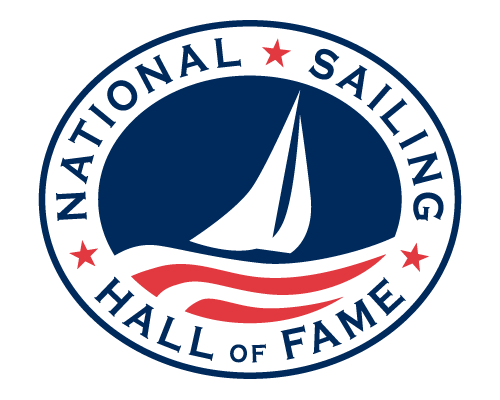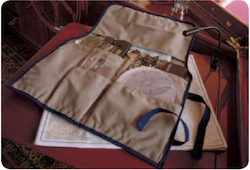“Navigation” – Curriculum
|
Learning Objectives Students will:
Timing: Each of these lessons are a 90 minute lesson plan. They can be broken down fairly easily into two 45-minute plans. MOI = Method of Instruction (Research, Lecture, Workshop, etc.) |
||
|
|
||
Lesson 1: Reading a Topographic Map and Nautical Chart |
||
Deciphering a
|
Using a local map and a non-local map show different regions and explain how topographic maps work. The same can be done with charts. MOI: Presentation requiring student interaction. |
|
Deciphering a Chart |
Using a Chart you may do the same thing as with the Local Map and Non-Local Map. MOI: Presentation requiring student interaction. |
|
Learning the Key |
The Key is a very important part of any map. However on most topographic maps you will find it lacking. Explain standard symbols using page 1 of a Chart book or Map pack. MOI: Student Analysis, Student Discovery. |
|
Contour Lines, Interval, and
|
Contour Lines are a great way to explain 3D and 2D and charting. Contour lines can’t touch so the rings represent a set elevation interval representing a 3D surface in 2D. It is important to explain contour lines and their interval so students can more accurately read a map. MOI: Presentation requiring student interaction, Map/Chart Work. |
|
Local Map/Chart
|
Using the local map show how it highlights certain reference points so that students who live in the area will be able to see the next time they step outside. MOI: Presentation, Student Analysis, Map/Chart Work. |
|
The Three Norths |
The Three Norths Explains how you make a Sphere into a Rectangle and why compasses don’t point North. MOI: Map/Chart Work, Presentation . |
|
Declination |
Declination is a great way to challenge the modern mind with basic arithmetic. Explain how it is important to work off of true north and that adding or subtracting the declination of the area is important so as not to compound errors. Change maps often to allows for students to get into a routine of checking declination. MOI: Presentation requiring student interaction, Map/Chart Work. |
|
|
|
||
Lesson 2: Using a Compass |
||
Compass Vocabulary |
Compass Vocabulary is very important so that students can follow exact instructions. It is also a great way to talk about other vocabulary involved in sailing, boating, and navigation in general. MOI: Presentation , Quiz, Worksheet |
|
Compass History |
The history of navigation, the compass, and other navigation tools as well as the discovery of Longitude will show how we’ve come to this modern era of navigation, but also why it can be important not to forget the “old fashioned” way of doing things. MOI: Presentation. |
|
How a Compass Works |
How a compass works will explain where a compass points. How the Earths Magnetic Poles work and why we can use a compass to orient ourselves on a map. MOI: Presentation, Compass Work. |
|
Bearing vs. Azimuth |
This is comparing and contrasting two differing ways of reading a compass and giving headings. 360 degrees (Azimuth) vs. 45 degree intervals (Bearing). Allows you to create and additional challenge for the students. MOI: Compass Work, Map /Chart Work . |
|
How to Take a
|
This lesson on how to orient the compass and how to take a heading is important, without this knowledge students cannot complete the course properly. MOI: Compass Work. |
|
|
|
||
Lesson 3: Triangulation |
||
Points We Can Use
|
Students should Identify what points on the map they could use to triangulate their position. MOI: Map/Chart Work, Presentation. |
|
Visual Triangulation |
This exercise allows students to estimate. This skill is very essential for much of navigation. Getting the students to understand how useful estimation can be is important for future lessons. Have students identify three points that they could easily and readily see visually. From there have them estimate where they would probably be on the map based on what they can see. No bearings or headings should be taken for this exercise. MOI: S tudent An alysis, Student Discovery. |
|
Bearing Triangulation |
This exercise is to improve on visual bearings. It is to show how precision matters in certain navigating situations. This exercise is done with a compass and three points to have students check their estimated position and to verify it or correct it from their visual triangulation. MOI: Compass Work, Map/Chart Work, Student Analysis, Student Discovery. |
|
Reverse Triangulation |
Reverse Triangulation is simply starting from a known point and taking headings on three points. This is a good in classroom exercise or rainy day exercise. For students who can’t go outside and truly navigate they can get the idea of where they are and where points are that they could use. MOI: Student Analysis, Student Discovery, Map/Chart Work, Compass Work. |
|
|
|
||
Lesson 4: Plotting a Course / Route |
||
How to Set a Course / Route |
Demonstrate or explain an Orienteering competition. This is to set expectations for the students. This exercise also explains how to combine points to create a route or course. MOI: Presentation, Map/Chart Work, Compass Work. |
|
Heading Off |
When an object is in the way students will need to learn to head off to keep a proper course. If they don’t head off they will add error to their courses. MOI: Student Discovery, Student Analysis, Compass Work. |
|
Thinking Ahead &
|
Students need to think ahead when planning a course. This lesson helps them start to translate what they have been learning in the class into mathematics. If they think geometrically they can make their courses much more complicated while keeping directions simple. They must also learn their audience. In addition they must figure out a proper way to back track their course without getting turned around. MOI: Student Discovery, Student Analysis, Compass Work, Map/Chart Work. |
|
Setting a Course |
Finally, students will set a course of their choice. This can be checked by peers, by the teacher or by a combination of both. MOI: Student Discovery. |
|
|
|
||
Lesson 5: Deciphering a Course / Route |
||
How to Navigate a Course |
Explains to students that have now created the course, how to properly navigate to more than one point. MOI: Presentation, Student Analysis, Map Work/Chart Work, Student Discovery. |
|
Common Navigation Errors |
A brief lesson on some of the common mistakes that take place during navigation and why they occur. Also a good time to interject historical stories of mistakes that were made during navigation. MOI: Student Discovery. |
|
Dead Reckoning |
Dead Reckoning is a great way to interject some basic algebra. Explain how based off of Time distance and speed you can find where you are even without reference points. MOI: Presentation, Compass Work, Map/Chart Work, Problem Sheet. |
|
Set and Drift |
If there is time you can then work from Dead reckoning into set and drift. Where on land you don’t have these things on the water you need to worry about current and crosswinds. This combines Algebra and geometry. MOI: Presentation, Compass Work, Map/Chart Work, Problem Sheet. |
|
|
|
||
Lesson 6: Using a GPS |
||
How a GPS Works |
Most students are reliant on Global Positioning Systems (GPS) to figure out where they are. It is time to embrace that this has made navigation significantly easier. It is also important to realize that it is not as reliable and requires constant upkeep compared to other methods of navigation. It is also important for students to understand how now they are navigating on three dimensional planes and not on 2 dimensional planes such as on charts or maps. Explaining how a GPS works is a great way to add a technology component to this course as well as an Engineering component. MOI: Presentation requiring student interaction. |
|
Finding You |
Without a you are here sign most students will find themselves lost on a true GPS reader. A chartplotter or car navigation explains where you are but it is not always that easy. The instructor should help students figure out where they are and how to compare their Latitude and Longitude with their charts. MOI: Presentation requiring student interaction, Student Discovery, Student Analysis. |
|
Inputting a Point |
Explain how to input a point or waypoint into the GPS. Each GPS reader is different and therfore this can vary greatly. Becoming familiar with multiple systems will make it easier to teach this section. Allow students to attempt to find where they are in comparison to other points. MOI: Student Discovery, Student Analysis, Presentation. |
|
Setting a Route |
Once students have plotted individual points of interest or waypoints it will be important for them to figure out how to navigate from point to point to create a route. MOI: Student Discovery, Presentation requiring student interaction. |
|
Navigating a Course |
Once students have set a route they must figure out how to actual navigate that route using both GPS and compass. MOI: Student Discovery. |
|
|
|
||




